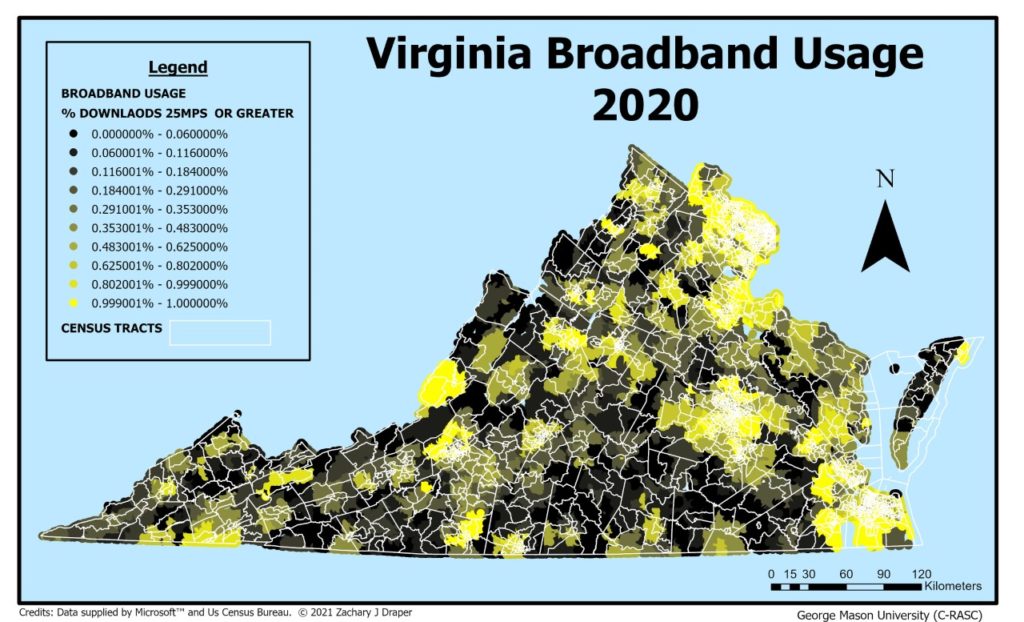Blog post by C-RASC Summer 2021 Intern, Zach Draper (Georgia State University)
In the 20 years since broadband internet began widespread deployment in 2000, somewhere between 50-75% of US citizens are still waiting for access. Clearly, there is little consensus as to what defines a community as connected, and nearly all current surveys show room for improvement. Political and geographic elements are also limiting factors for access to the benefits of cost-effective, high-speed internet.
Urban populations enjoy much higher connectivity and speeds than their rural counterparts, and it has never been made more evident than during the COVID-19 lockdowns experienced across the country. Many rural populations have had to do without the advantages of telecommunication for healthcare, education, entertainment, and to a large degree, mental health that urban residents rely upon during this difficult time. As we move forward as a nation, we must address access to adequate broadband speeds equitably and sustainably for improved resiliency in communities of all types.
In my work with George Mason University’s Center for Resilient and Sustainable Communities (C-RASC), I am researching the state of rural connectivity in the Commonwealth of Virginia and, more specifically, its impact on agriculture, or “ag.” With farming being one of the largest sectors of Virginia’s economy, it is important for the nation, state, and local communities for farmers to have access to the most effective and sustainable technology available. Connected and precision ag tools drastically reduce cost, waste, and other potential environmental impacts from agriculture. Without proper broadband, widespread digital opportunities for Virginia’s farms will remain elusive.

Maps are vital in understanding where and how connected ag initiatives are focused. On both state and federal levels funding is allocated for addressing the inequity; however, due to existing FCC rules, various factors can be exploited by big telecom to misrepresent connectivity in areas where the market incentive to invest is lacking. Stakeholders at all levels disagree with current maps of the state. My work involves analyzing current maps to identify approaches for more granular mapping in Virginia. I am currently reverse geocoding data from the FCC, Microsoft, and other providing stakeholders to show that the definition of broadband connectivity should suit the needs of citizens first. Later this month, I will be attending a meeting with the Governor’s office alongside C-RASC Director, Dr. Kathy Laskey, and C-RASC Executive Advisor, Dr. Linton Wells II, as well as C-RASC research analyst Paul Rayi, who has been conducting a survey of ag tech needs and gaps. Through my work, I hope to leverage Virginia’s efforts to strategically enhance broadband connectivity, and support pilot programs on several farms I have identified as potential early adopters of ag tech.

